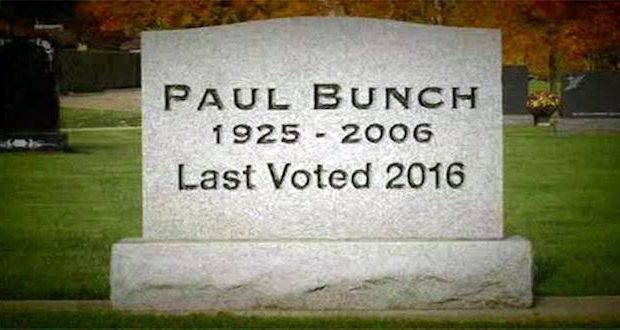The Supreme Court ruled this week that states can clean up their voting rolls by removing voters who haven’t cast ballots in six years.
The justices rejected, by a 5-4 vote Monday, arguments in a case from Ohio that the practice violates a federal law intended to increase the ranks of registered voters. A handful of other states also use voters’ inactivity to trigger a process that could lead to their removal from the voting rolls.
 Justice Samuel Alito said for the court that Ohio is complying with the 1993 National Voter Registration Act. He was joined by his four conservative colleagues.
Justice Samuel Alito said for the court that Ohio is complying with the 1993 National Voter Registration Act. He was joined by his four conservative colleagues.
The four liberal justices dissented.
Partisan fights regarding ballot access are being played-out across the country. Voter fraud most often happens when inactive voter accounts are used by others in an attempt to vote multiple times. Research has found the practice, by a wide margin, is most often employed in the favor of Democrat candidates. Republicans have argued that they are trying to promote ballot integrity and prevent voter fraud. Even though this process takes up to 6 years, Democrats had accused Republicans of trying to suppress votes from minorities and poorer people who tend to vote for Democrats.
Under Ohio rules, registered voters who fail to vote in a two-year period are targeted for eventual removal from registration rolls, even if they haven’t moved and remain eligible. The state said it only uses the disputed process after first comparing its voter lists with a U.S. postal-service list of people who have reported a change of address. Not everyone who moves notifies the post office, though, the state said.
So the state asks people who haven’t voted in two years to confirm their eligibility. If they do, or if they show up to vote in the next four years, voters remain registered. If they do nothing, their names eventually fall off the list of registered voters.
“Combined with the two years of nonvoting before notice is sent, that makes a total of six years of nonvoting before removal,” Alito wrote.
Justice Stephen Breyer, writing in dissent, said the 1993 law prohibits removing someone from the voting rolls “by reason of the person’s failure to vote. In my view, Ohio’s program does just that.”
In a separate dissent, Justice Sonia Sotomayor said Congress enacted the voter registration law “against the backdrop of substantial efforts by states to disenfranchise low-income and minority voters.” The court’s decision essentially endorses “the very purging that Congress expressly sought to protect against,” Sotomayor wrote.
Civil-rights groups said the court should be focused on making it easier for people to vote, not allowing states to put up roadblocks to casting ballots. Others countered that no matter how easy it is to vote, you actually need to vote and be registered at the same home address, for the integrity of the voting system to be upheld.
Democrats see the ruling as a hindrance to winning future elections because often provisional ballots are given to voters who cannot prove their identity or legal voting status. Rarely are those votes thrown out and the votes typically go towards the Democrat candidate.
 Metro Voice News Celebrating Faith, Family & Community
Metro Voice News Celebrating Faith, Family & Community 








